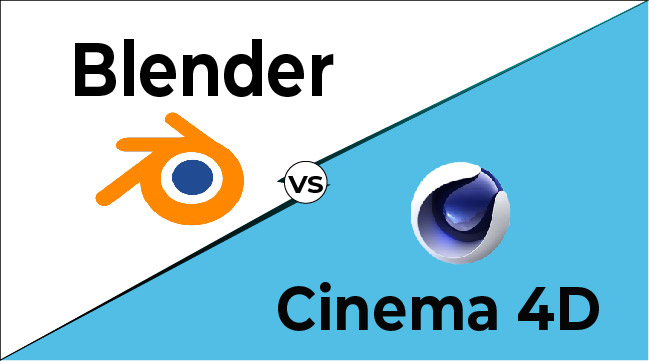Short Verdict
Blender and Cinema 4D are both powerful 3D software with their own strengths and weaknesses. Blender is free, open-source software with a strong community and a wide range of features, making it an excellent choice for hobbyists and small studios on a budget. On the other hand, Cinema 4D is commercial software with a more intuitive interface and a focus on motion graphics, making it a popular choice for professional designers and animators. Ultimately, the choice between Blender and Cinema 4D will depend on the specific needs and budget of the user.
What is Blender?
Blender is free and open-source 3D creation software used for creating animations, visual effects, video games, and 3D models. It is available for Windows, Mac, and Linux operating systems and has a wide range of features including modeling, sculpting, texturing, rendering animation, and video editing. Blender is also supported by a strong community of developers and users who contribute to its ongoing development and provide resources and tutorials for users. Its free availability and comprehensive feature set make Blender a popular choice for hobbyists, independent filmmakers, and small studios.
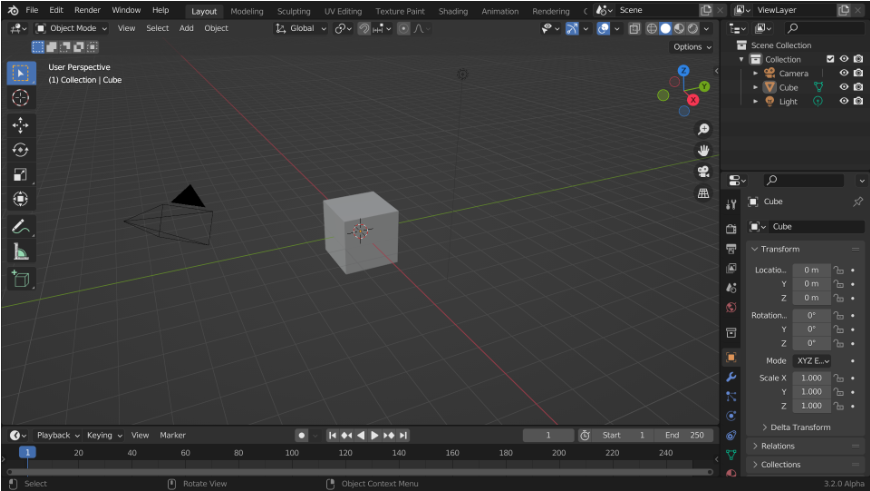
What is Cinema 4D?
Cinema 4D is commercial 3D modeling, animation, and rendering software developed by Max on. It is used for creating 3D graphics, visual effects, motion graphics, and animations for various industries, including film, television, advertising, and video game development. Cinema 4D has a user-friendly interface that makes it easy for beginners to start creating 3D content, while also offering advanced tools and features for professionals. Its feature set includes modeling, texturing, lighting, animation, dynamics, and advanced rendering capabilities. Cinema 4D also has a strong plug-in ecosystem and is often used in conjunction with other software, such as Adobe After Effects, to create complex visual effects and motion graphics.
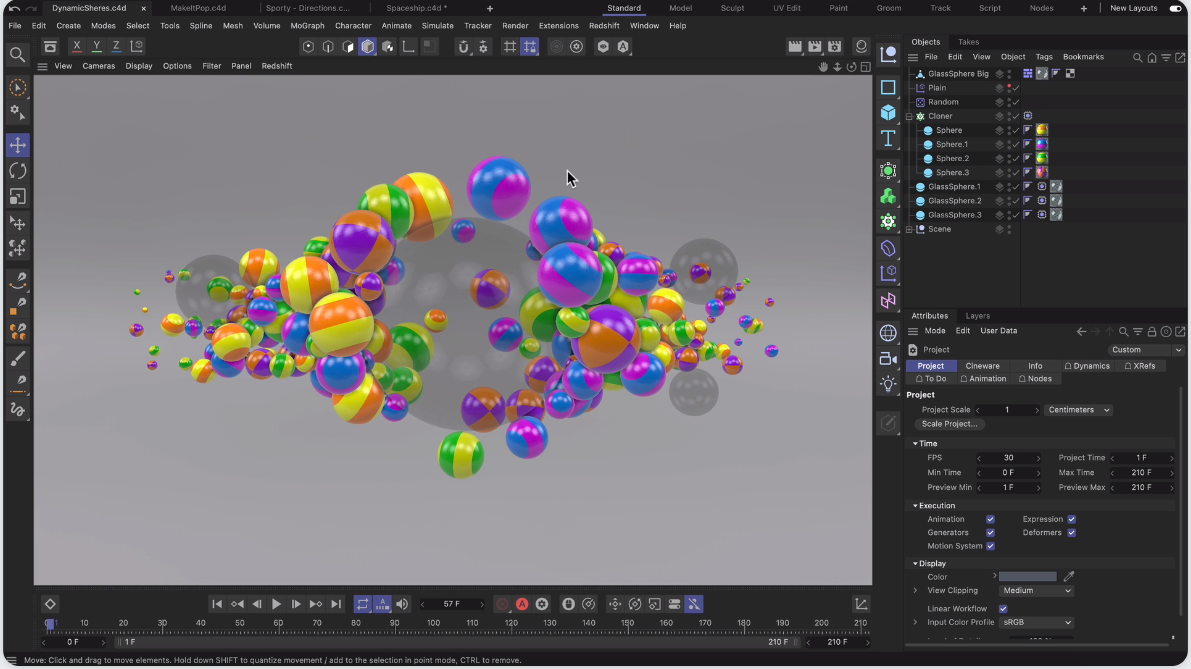
Advantages and Disadvantages of Blender
Advantages of Blender
- Free and Open Source: One of the biggest advantages of Blender is that it is free and open-source software. This means that anyone can use and modify the software to fit their needs, without having to worry about licensing fees.
- Robust modeling tools: Blender offers a wide range of modeling tools that enable users to create complex models with ease. These tools include sculpting, retopology, and procedural modeling.
- Customization: Blender offers a high degree of customization, allowing users to tailor the interface and key bindings to suit their preferences. This can help to streamline the workflow and make the software easier to use.
- Animation and Rigging: Blender has a powerful animation and rigging toolset, which makes it popular among game developers and animators. It offers features such as keyframe animation, armature deformation, and shape keys.
Disadvantages of Blender
- Steep learning curve: Blender has a steep learning curve, which can be intimidating for beginners. It can take some time to master the software and become proficient in its use.
- Limited documentation: Blender’s documentation is not as comprehensive as that of some other software, which can make it difficult for beginners to get started. However, there are many online resources and tutorials available to help users learn the software.
- User Interface: Blender’s interface can be overwhelming and confusing, with a lot of buttons and options. This can make it difficult for beginners to find the tools they need, and can slow down the workflow.
Advantages and Disadvantages of Cinema 4d
Advantages of Cinema 4D
- Easy to learn: Cinema 4D is considered to be one of the easiest 3D modeling software to learn, with a user-friendly interface and intuitive controls. This makes it a popular choice for beginners and professionals alike.
- User Interface: Cinema 4D’s interface is clean and intuitive, with a focus on ease of use. The software is well-organized, and the tools are easy to find and use.
- Integration: Cinema 4D integrates seamlessly with other software, such as Adobe After Effects, making it a popular choice for motion graphics and animation.
- Advanced rendering: Cinema 4D offers advanced rendering capabilities, including global illumination, physical rendering, and multi-pass rendering. This makes it a popular choice for architects, product designers, and animators.
Disadvantages of Cinema 4D
- Cost: Cinema 4D is not free software and can be expensive, making it less accessible to users on a tight budget.
- Limited modeling tools: Cinema 4D’s modeling tools are not as robust as Blender’s, which can make it difficult to create complex models. However, the software does offer tools such as parametric modeling and deformers.
- Plug-in dependency: Cinema 4D heavily relies on plug-ins to extend its functionality. While this can add flexibility to the workflow, it can also be expensive and add extra steps to the process.
- Limited simulation tools: Cinema 4D has limited simulation tools compared to other 3D software, which can make it less suitable for certain types of projects. However, the software does offer some simulation tools such as cloth and hair simulation.
How do both these Programs Work?
Blender
Blender is open-source 3D modeling and animation software that uses a mesh-based modeling system. In this system, 3D models are created and manipulated using a collection of vertices, edges, and faces. Users can add basic shapes such as cubes, cylinders, and spheres to the 3D workspace and manipulate these shapes to create more complex objects. Blender also provides advanced modeling tools, such as sculpting and procedural modeling, that enable users to create intricate and detailed models.
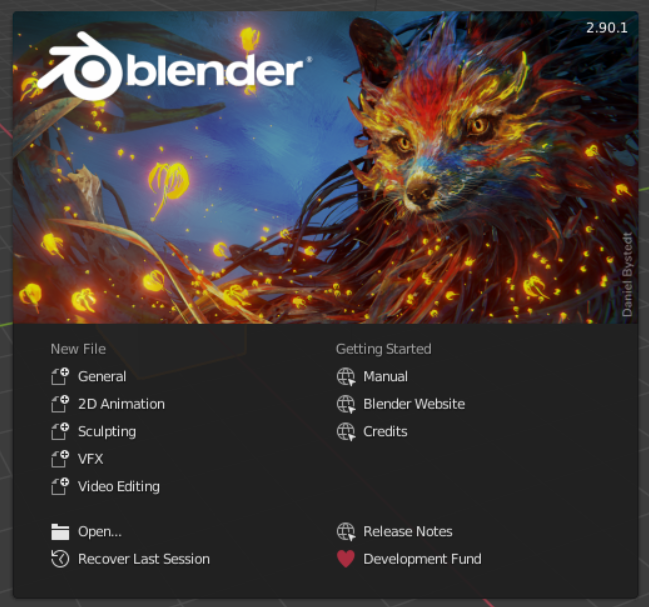
Blender’s animation and rigging system are also powerful and versatile. Users can create keyframe animations by setting the position, rotation, and scale of objects at different points in time. Blender will automatically generate the animation between these keyframes. Blender’s rigging tools allow users to create complex skeletons and deformations for characters and other objects. Blender also includes a robust physics engine that simulates real-world physics, including gravity, collisions, and soft-body dynamics.
Blender’s user interface is highly customizable, making it easy for users to organize their workspace and access their preferred tools. Blender also supports a range of plugins and add-ons that extend its capabilities even further. Blender is compatible with Windows, macOS, and Linux operating systems.
Cinema 4D
Cinema 4D is a commercial 3D modeling and animation software that uses a parametric modeling system. In this system, 3D models are created using a series of adjustable parameters or settings. Users can select a basic shape such as a cube or sphere and adjust its size, shape, and other properties using sliders and settings. Cinema 4D also provides advanced modeling tools, such as deformers and splines, which enable users to create more complex and organic shapes.
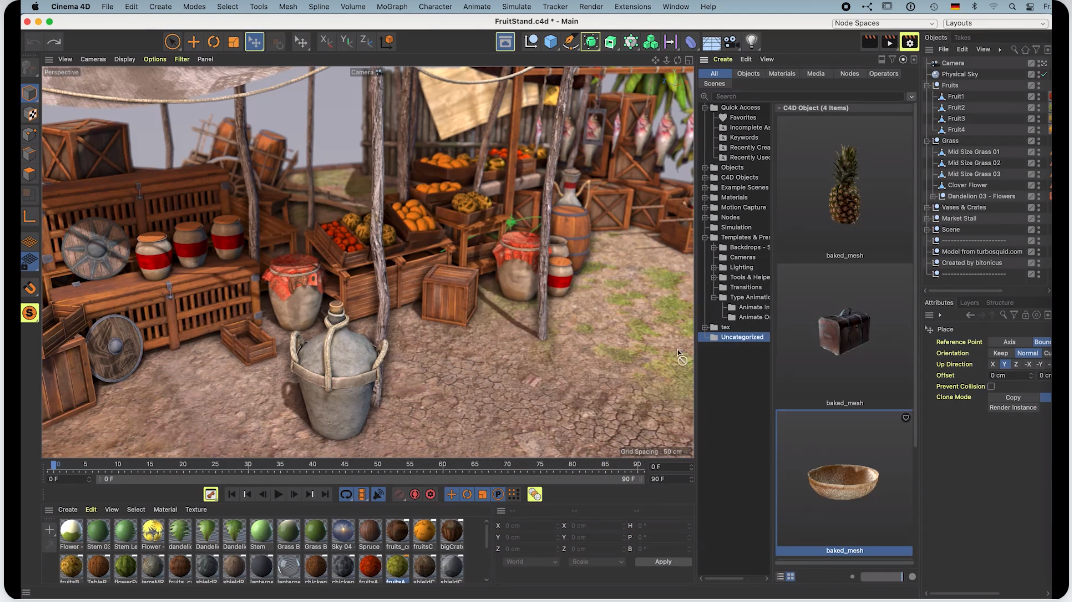
Cinema 4D’s animation and rigging system are also powerful and easy to use. Users can create keyframe animations by setting the position, rotation, and scale of objects at different points in time. Cinema 4D will automatically generate the animation between these keyframes. Cinema 4D’s rigging tools allow users to create complex skeletons and deformations for characters and other objects.
Cinema 4D has a clean and intuitive user interface that makes it easy for users to navigate and access their preferred tools. Cinema 4D also includes a range of built-in presets, materials, and lighting setups that enable users to quickly create professional-looking 3D scenes. Cinema 4D is compatible with Windows and macOS operating systems.
Find out which one is best for your project: Revit or SketchUp
Price
Blender: Blender is free and open-source software, which means that it is completely free to use and distribute. There are no licensing fees or subscription costs.
Cinema 4D: Cinema 4D is commercial software, which means that it requires a paid license to use. The software is available as a perpetual license, which costs $3,495, or as a subscription, which costs $94.99 per month.
Modeling
Blender: Blender uses a mesh-based modeling system, which involves manipulating 3D models using a collection of vertices, edges, and faces. Blender also offers advanced modeling tools, such as sculpting, retopology, and procedural modeling, that enable users to create intricate and detailed models.
Cinema 4D: Cinema 4D uses a parametric modeling system, which involves creating 3D objects using a series of adjustable parameters or settings. Cinema 4D also provides advanced modeling tools, such as deformers and splines, which enable users to create more complex and organic shapes.
Animation
Blender: Blender offers a range of animation tools, including keyframe animation, character rigging, and physics simulations. Users can create keyframe animations by setting the position, rotation, and scale of objects at different points in time, and Blender will automatically generate the animation in between these keyframes.
Cinema 4D: Cinema 4D offers a range of animation tools, including keyframe animation, character rigging, and particle simulations. Users can create keyframe animations by setting the position, rotation, and scale of objects at different points in time, and Cinema 4D will automatically generate the animation in between these keyframes.
Rendering
Blender: Blender includes a built-in Cycles rendering engine, which provides high-quality, photorealistic renders. Blender also supports third-party rendering engines, such as Arnold,
 Cinema 4D: Cinema 4D includes a built-in physical rendering engine, which provides high-quality, photorealistic renders. Cinema 4D also supports third-party rendering engines, such as Arnold and Redshift.
Cinema 4D: Cinema 4D includes a built-in physical rendering engine, which provides high-quality, photorealistic renders. Cinema 4D also supports third-party rendering engines, such as Arnold and Redshift.
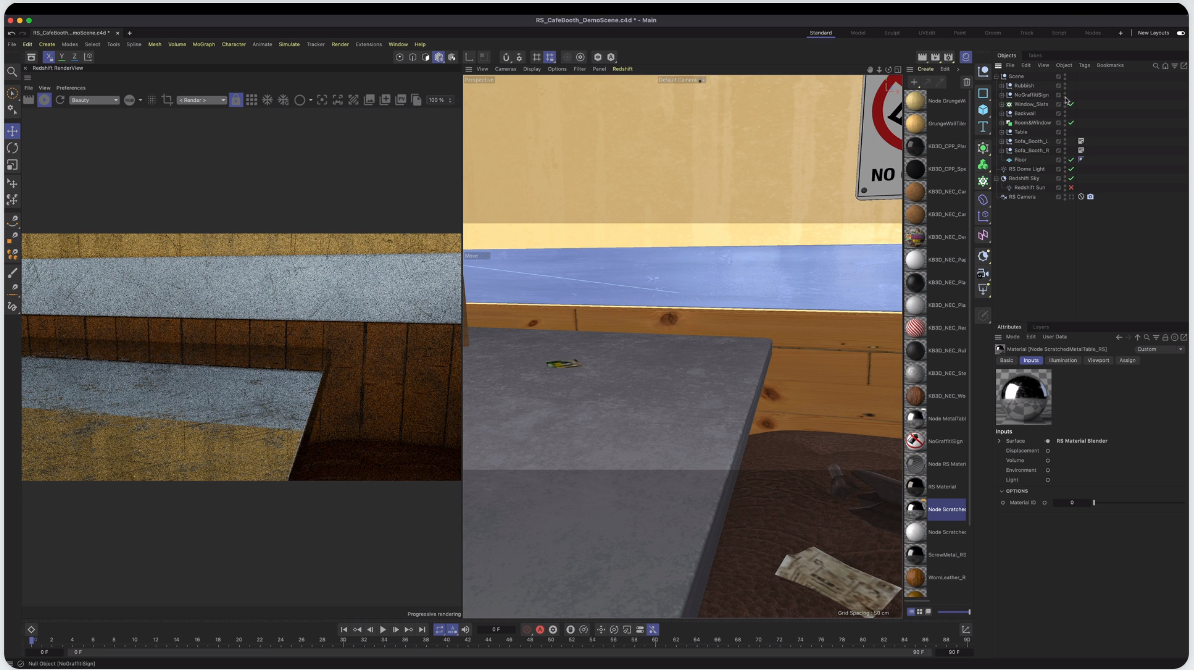
User Interface
Blender: Blender’s user interface is highly customizable, making it easy for users to organize their workspace and access their preferred tools. The user interface can be a bit overwhelming for new users, but Blender offers extensive documentation and tutorials to help users get started.
Cinema 4D: Cinema 4D’s user interface is clean and intuitive, making it easy for users to navigate and access their preferred tools. The user interface can be customized to some extent, but not as extensively as Blender’s.
Winner: Comparison of Blender vs. Cinema 4D Features
Blender and Cinema 4D are both powerful 3D modeling and animation software with their own unique strengths and weaknesses. When it comes to price, Blender wins as it is a free and open-source software, while Cinema 4D is a commercial software that requires a paid license. In terms of modeling, both Blender and Cinema 4D advanced modeling tools, but Blender uses a mesh-based modeling system, while Cinema 4D uses a parametric modeling system. Therefore, it is a tie between the two. Both Blender and Cinema 4D offer a range of animation tools, making it a tie again between the two. However, in terms of the user interface, Cinema 4D wins as its interface is clean and intuitive, making it easy for users to navigate and access their preferred tools. While Blender’s interface is highly customizable, it can be overwhelming for new users. Overall, the choice between Blender and Cinema 4D often comes down to personal preference, the specific needs of the user, and the available budget.
Conclusion
Both Blender and Cinema 4D are powerful 3D modeling and animation software with unique features and capabilities. Blender is free and open-source software, making it a great choice for users on a budget, while Cinema 4D is commercial software that offers a clean and intuitive user interface, making it easier for users to navigate and access their preferred tools. When it comes to modeling, animation, and rendering, both software is highly capable and offer similar functionalities, choosing between the two comes down to personal preference and the specific needs of the user. Ultimately, .both software is a great options for anyone looking to get into 3D modeling and animation, and it is worth trying out both to see which one works best for you.
Summary
Blender and Cinema 4D are both powerful 3D modeling and animation software with unique features and capabilities. In this comparison, we will be looking at the features of Blender and Cinema 4D, their strengths and weaknesses, and ultimately deciding which software comes out on top.
When it comes to price, Blender is the clear winner as it is a free and open-source software, while Cinema 4D is a commercial software that requires a paid license. This makes Blender a great choice for users on a budget, as it offers similar functionalities to Cinema 4D without the added cost. Both Blender and Cinema 4D offer advanced modeling tools, but they use different modeling systems. Blender uses a mesh-based modeling system, while Cinema 4D uses a parametric modeling system. Mesh-based modeling is more common in the industry and is often preferred by artists for its flexibility and control. On the other hand, parametric modeling is more intuitive and faster for users who are new to 3D modeling. Therefore, the winner in this category comes down to personal preference. Both Blender and Cinema 4D offer a range of animation tools, making it a tie between the two. Blender offers a robust animation system, with features such as keyframing, character rigging, and simulation tools. Cinema 4D also offers a wide range of animation tools, with a clean and intuitive user interface that makes it easy for users to access their preferred tools. Blender uses the Cycles render engine, which is a path-tracing render engine that produces high-quality, physically accurate images. Cinema 4D uses the Physical render engine, which is a hybrid engine that combines ray tracing and other techniques to produce high-quality images. Both engines offer a range of options for fine-tuning the render quality, making it a tie between the two. When it comes to the user interface, Cinema 4D is the clear winner. Its interface is clean and intuitive, making it easy for users to navigate and access their preferred tools. The interface is also highly customizable, allowing users to set up their workspace to their liking. Blender’s interface, on the other hand, is highly customizable but can be overwhelming for new users. However, once users become familiar with the interface, they can set up their workspace to their liking, making it a great option for experienced users. In terms of the community, Blender has a larger user base and community than Cinema 4D. This means that there are more resources available online, such as tutorials, forums, and plug-ins. Blender’s community is also more active and constantly working to improve the software, which can result in frequent updates and new features. However, Cinema 4D has a dedicated community of users and a large user base in the film and motion graphics industry. In terms of support and documentation, both Blender and Cinema 4D offer extensive documentation and support. Blender has an extensive wiki, with documentation on almost every aspect of the software. Additionally, there are numerous tutorials and resources available online, making it easy for users to learn the software. Cinema 4D also has extensive documentation, including tutorials, forums, and online resources. However, as commercial software, Cinema 4D offers more comprehensive support through its customer service team.

